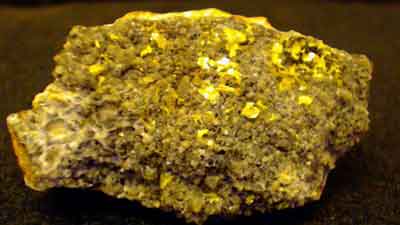Uranium spot price reaches nine-year high as Sprott resumes purchases
Wendy Dulaney
 Current month uranium spot prices rose sharply to a nine-year high Sept. 15 as the Sprott Physical Uranium Trust began buying again after approval of an expanded equity sales program that will allow the fund to acquire up to $1 billion in additional uranium in the coming months. Current month uranium spot prices rose sharply to a nine-year high Sept. 15 as the Sprott Physical Uranium Trust began buying again after approval of an expanded equity sales program that will allow the fund to acquire up to $1 billion in additional uranium in the coming months.
S&P Global Platts assessed spot U3O8 prices at $48/lb at 1 pm ET, the highest price since September 2012.
It also marked a jump of $5/lb, or 11.6%, since Sept. 13
As Sprott approached the limit of its existing equity sales program, last week it filed with Canadian securities regulators to enlarge its at-the-market fund, which allows it to sell additional shares at its discretion and use the proceeds to buy additional uranium, from $300 million to $1.3 billion.
The trust reported no additions to its uranium holdings on its website Sept. 10-13.
After announcing Sept. 14 that the ATM had been expanded to $1.3 billion, the trust reported one-day purchases totaling 1.25 million lb of U3O8.
Demand is also coming from sources other than Sprott, with a variety of financial investors and uranium producers seeking to acquire material during what some market participants see as a supply crunch. Uranium Royalty Corp., another Canadian company, announced Sept. 15 that it had added 300,000 lb of uranium to its holdings recently. Last month URC announced its own ATM program for $40 million, although only some of that amount is earmarked for physical uranium purchases.
The moves come as more uranium producers, developers, and explorers have been entering the spot market, seeking to build inventories and benefit from an increase in the price as supply shrank in recent years. Some investors see nuclear energy benefiting from an increasing focus on policies to reduce climate change.
One reason offers are rising so quickly is a dearth of currently available material. Multiple market sources have said that Sprott has acquired a lot of U3O8 for delivery in the current month, but also for delivery later as prompt material climbed in price.
The price surge has made inventories more valuable and may spur future production, uranium company officials said.
In an interview with Bloomberg News posted on their website Sept. 14, David Cates, CEO and president of Denison Mines, said "discretionary supplies" in the uranium market were so thin that market participants had approached the company and pressured it to sell part of its 2.5 million lb uranium stockpile. Cates said Denison Mines did not intend to sell its holdings, which are intended for use as capital to finance mining projects.
"[Sprott] isn't going to sell uranium. This is what they do with all their commodities, hold them. The only difference is, uranium is a much smaller market. They're going to take all the cheap material off the market and sequester it for a very long time," Paul Goranson, CEO of uranium development company enCore Energy, said in a Sept. 10 interview. "Assuming this is sustainable, it will incentivize production."
Sprott began buying uranium for its ATM Aug. 18. The trust's site reported having bought 7.77 million lb of U3O8 on the spot market through Sept. 14.
An analyst report, released by Bank of America Sept. 14, listed potential sources of short-term supply as "U3O8 held by junior miners and hedge funds, uncommitted supply from producers and a reversal of carry trades."
The average Platts spot U3O8 price for the first six months of 2021 was close to $30/lb. The Sept. 15 price represents a 58% jump from that average.
Bank of America said there is "58 [million lb/year] of idled production capacity and 16.8 [million lb/year] of unutilized capacity in Kazakhstan," but noted, "a large majority of this is unlikely to respond without long-term contracts and would require six or more months to ramp up."

• Analyze commodity markets and macroeconomic trends to develop daily market commentary and analysis articles
• Develop and maintain rapport with traders, brokers, and other market participants to collect market and trade information
• Collaborate with other reporters for cross-regional commodity markets analysis
www.spglobal.com
| 



